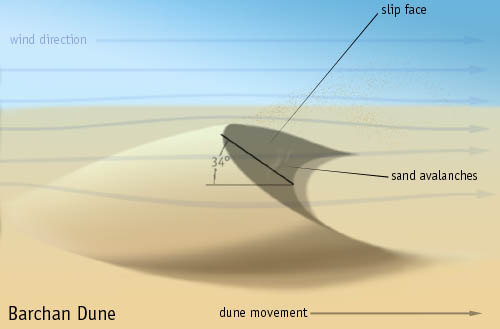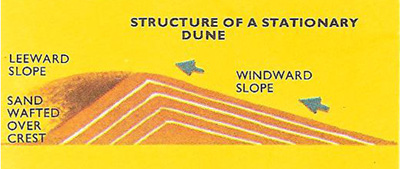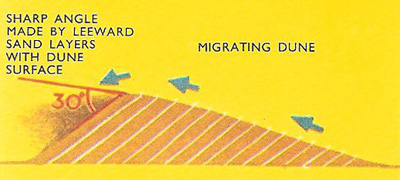barchan



A barchan is a crescent-shaped dune found in sandy deserts throughout the world where the wind is constant in speed and direction, and little vegetation is present. Barchans also occur fairly frequently in coastal regions; they are quickly shifted by the wind, particularly when small.
On the slip face of a barchan, sand avalanches occur when sand piles up beyond the angle of repose, which is just over 30 degrees.
Formation and movement
During its formation, a barchan is constantly shaped by the wind. It has one steep slope on the leeward side (see diagrams below) and a gentle gradient on the windward side of roughly 12 degrees. Some of the sand deposited by the wind on the gently sloping surface is swept forward over the crest of the dune and comes to rest at an angle of 30 to 34 degrees.
Dunes are continually moved forward by the prevailing wind. Sand on the gentle windward slope is for ever blown down the steep leeward slope. Consequently the layers of sand in the migrating dune all come to slope at about 30 degrees. The sharp (acute) angle made by these layers with the dune surface will point in the direction from which the prevailing wind was blowing.
From the study of ancient sand dunes even seasonal changes in wind direction have been detected.


